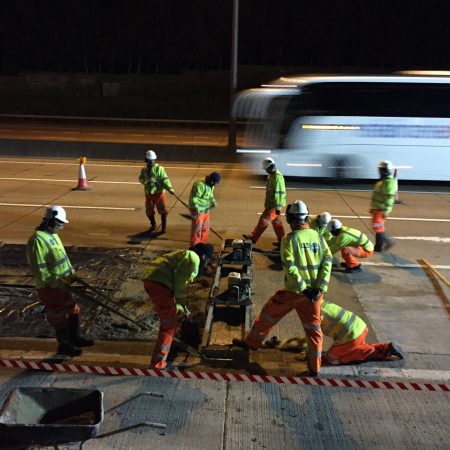Should we stick to ‘tried and tested’ techniques?
Will tried and tested techniques bring us the Highways Outcomes we Need?
When faced with a challenge it’s tempting to revert to the ‘tried and tested.’ The sense of security this brings can convince all parties that they are treading the least risky path. For modern highways projects this sense of security is entirely misplaced for a number of reasons.
Most importantly, the scale and complexity of the challenges are not what we have faced in the past.
•To deliver more value for less budget you have to work differently.
•To deliver more resilient highways assets we have to understand what design and construction factors we have to change.
•To reduce the frustration and delays faced by travellers and businesses, we can’t simply replicate how we’ve managed projects before.
•To build a world-class repository of asset condition data, we can’t rely on methods we’ve used in the past to conduct surveys and record project data.
If what we actually mean by ‘tried and tested’ is tried, tested and found wanting, we are not taking risk out of the project. We are, in fact, increasing the probability of failure on one or more key project success criteria.
The Need for Divergent Thinking
Engineers and construction professionals are practical problem solvers. It’s what we do. To rise to the challenge of modern highways projects we increasingly need to be creative problem solvers too.
The creative process should involve both divergent and convergent thinking. Divergent thinking generates the widest range of possible solutions. The process is characterized by imagination, curiosity and flexibility. The convergent process then evaluates possible solutions to select the most practical and appropriate ones.
In highways projects, convergent thinking has always dominated. Start with a set of known methods and solutions and then narrow those down. Whilst this brings the comfort of the familiar options, it can fail to discover and evaluate all sorts of potential alternatives in the process.
Creativity and Procurement
This reality also throws out a ‘creativity challenge’ to procurement models. How will they seek to encourage and evaluate innovation in the bids they receive? How can the specification and bidding process create room for innovation and accept that the best methods may not already be identified when the project is procured?
Once again, trust becomes a major consideration. Potential contractors must demonstrate that they have an approach that fosters creativity and innovation (such as Osborne’s IO App) and share it for the benefit of customers, not just for themselves. They must show that they look outside of their own experience and industry to spark new ideas and develop better solutions.
High value solutions start with selecting a contractor that engenders creativity and open-mindedness throughout the organisation. Innovation is a skill that is nurtured by culture. If the company culture isn’t innovative, you can hardly expect creativity from project design and execution.

